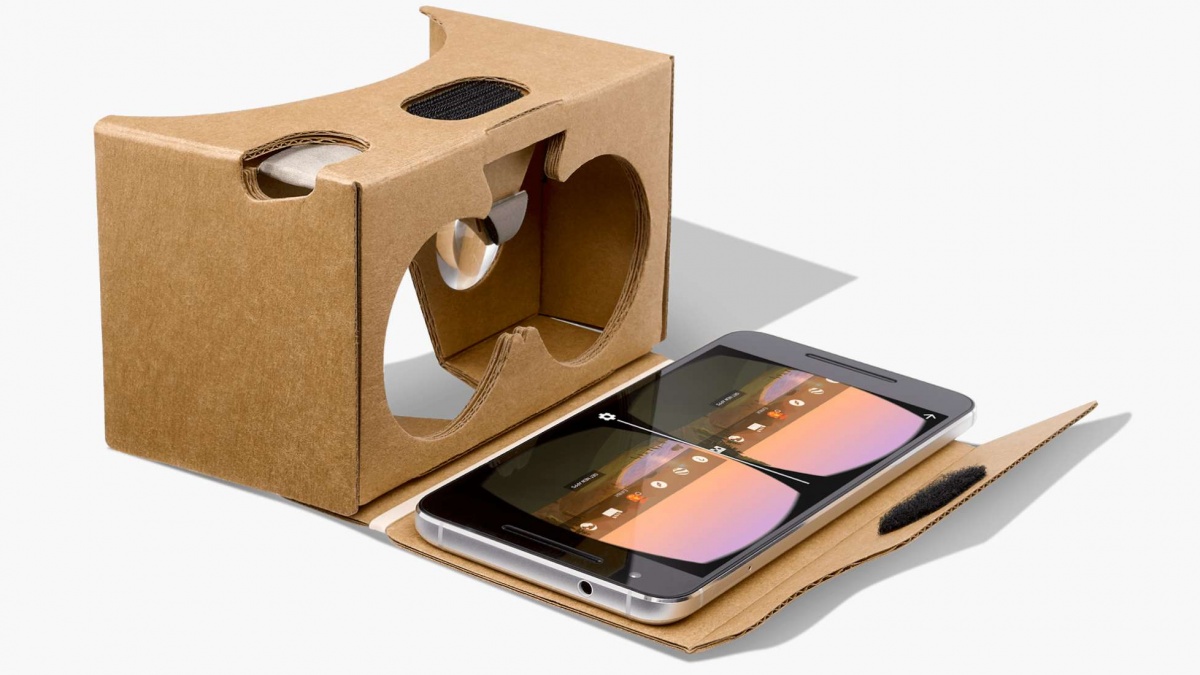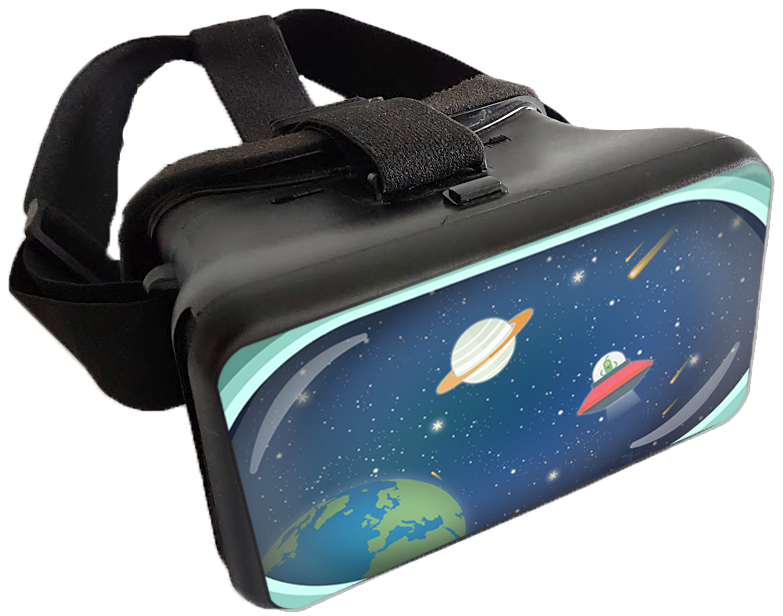VIRTUAL REALITY
Virtual reality, or VR for short, allows us to visit any place – no matter how remote or fantastic – and experience it at any time as if we were actually there. The basic principle of VR technology is to shield the user’s senses from the real world and replace them with simulated stimuli. In the simplest case, this only affects vision. The view of the real world is blocked by a VR headset (also known as “VR goggles”) and alternative images are presented instead. By using special optical lenses, a three-dimensional visual impression can be created. The closer the simulated stimuli resemble the real world, the more convincing the illusion.
Smartphone-Based VR
After the great success of the first VR headset “Oculus Rift“, which was available to a wider audience than just a few scientific institutions, Google fuelled the VR hype in 2014 by releasing its low-cost and open-source VR solution “Google Cardboard“. Google released the necessary software development kit and instructions for building a cardboard holder that turns a smartphone into an HMD.
The smartphone is placed in the holder, which allows it to be worn in front of the eyes. The images on the screen are then viewed through stereoscopic lenses, creating a 3D effect. The smartphone’s motion, rotation and acceleration sensors are used to transmit head movements in a 3D scene to the camera, creating the impression of a three-dimensional world around the viewer.


Where Can I Get a VR Viewer?
Would you like to use the Pengunaut Trainer on your smartphone and immerse yourself in the virtual world of the Pengunauts, but don’t have a suitable VR viewer yet? Here you will soon find a list of VR viewers in different price categories. Please note: We have not tested these devices and are not responsible for their quality, availability or other legal aspects. This is the sole responsibility of the device manufacturers. Our aim here is simply to help you get started with VR and make your search easier.